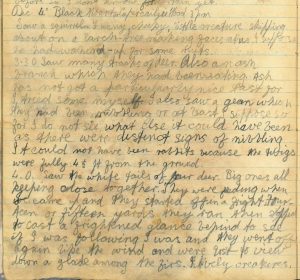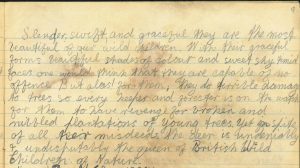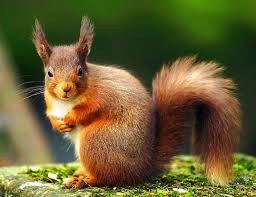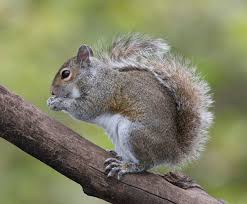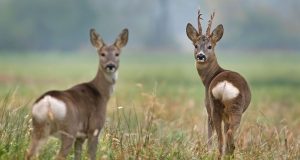There is some confusion with dates at this point in the diary, Viola begins with the 4th of December but then goes on to the 5th and other dates in November. We can assume that these are a mistake and it is December that she is writing about.
Viola describes seeing a squirrel. It is most likely that this would have been a red squirrel.
Although numbers have been declining in recent years, this did not begin until the 1940s, so there would have been plenty about in 1912. Grey squirrels were introduced into Britain in the late 19th century so it is possible that Viola’s squirrel was a grey.
Viola comments that he ‘must have wakened-up for some nuts’. It was widely believed until relatively recently that squirrels hibernated in winter, emerging infrequently to find nuts that they had buried in various caches to sustain them and then returning to a state of hibernation. It was then discovered that this is not the case. Squirrels spend much of the cold weather in their winter dreys, which they build near the centre of a sturdy tree so as not to be disturbed by storms. They do build up stores of nuts and emerge to find and eat these but they are incapable of storing enough body fat for actual hibernation, they are just not as active as they are in the other seasons of the year.
Viola again describes seeing deer. Her description of them as having white tails would indicate that these are roe deer, similar to the ones that she mentioned as having seen near Touch in her diary entry for 24th August. This entry clearly shows Viola’s affinity and love for the animals that she meets on her walks.
Dec 4th Black Mount or Capercailzie Wood 3 pm
Saw a squirrel. Funny, cheeky, little creature skipping
about on a larch-tree making faces at us. I suppose
he had wakened-up for some nuts.
3.30 Saw many tracks of deer. Also an ash
branch which they had been eating. Ash
has not got a particularly nice taste for
I tried some myself. I also saw a gean which
they had been nibbling or at least I suppose so
for I do not see what else it could have been
as there were distinct signs of nibbling.
It could not have been rabbits because the twigs
were fully 4½ feet from the ground.
4.00 Saw the white tails of four deer. Big ones all
keeping close together. they were feeding when
we came up and they started off in a fright. Four-
teen or fifteen yards they ran then stopped
to cast a frightened glance behind to see
if I was following I was and they went off
again like the wind and were lost to view
down a glade among the firs. Lovely creatures.
Slender swift and graceful they are the most
beautiful of our wild children. With their graceful
forms beautiful shades of colour and sweet shy timid
faces one would think that they are capable of no
offence. But alas! for them; they do terrible damage
to trees so every keeper and forester is on the watch
for them to have revenge for broken and
nibbled plantations of young trees. Yet in spite
of all their misdeeds the deer is undeniably
& undisputably the queen of British Wild
Children of Nature.
